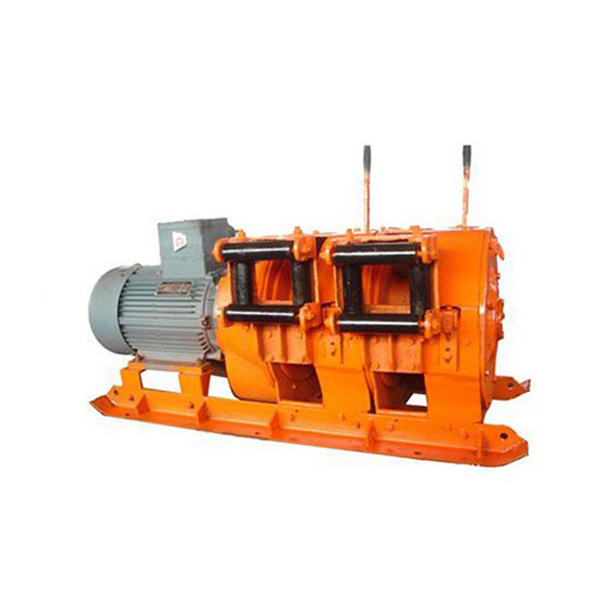


The underground mining scraper winch is a mechanical conveying device for fixed equipment. It is mainly used for continuous vertical lifting of powder, granules and small materials. It can be widely used in feed mills, flour mills, rice mills and oil mills of various sizes. Improvement of bulk materials in starch factories, grain warehouses and port terminals.
There are two types of underground mining scraper winches: tower mining underground mining scraper winches (machine room on the top of the wellbore) and underground mining scraper winches (machine room directly on the ground). According to the number of lifting wire ropes, it can be divided into single-cable friction type underground coal mining winches and multi-cable friction type underground coal mining winches. The advantage of the latter is that a thinner wire rope and a smaller diameter friction wheel can be used, so the unit is small in size and easy to manufacture; it has high speed, large lifting capacity and good safety. This underground mine scraper winch is used in most shafts with an annual output of more than 1.2 million tons and a depth of less than 2,100 meters.
The motor itself cannot rotate normally, and the rotor was removed to check the static balance. The precision of the reducer and the motor is poor, and the alignment is too high. The motor base is not installed correctly, the liquid level is out of specification and readjusted. The drive sprocket is installed incorrectly and needs to be readjusted.
The full-length flange of the enclosure is damaged or leaking. Replace with a new gasket, apply sealant, and then re-tighten the flange bolts. Material is discharged from the gap between the head and the base, and gaskets or sealants are added. The height difference of the input materials is too large, the feeding pressure increases, the material input method needs to be changed, and the feeding buffer device is added. The lift did not reach the design capacity, and the material was bonded to the chain bucket and slippers, and the material was periodically removed according to the degree of bonding.
